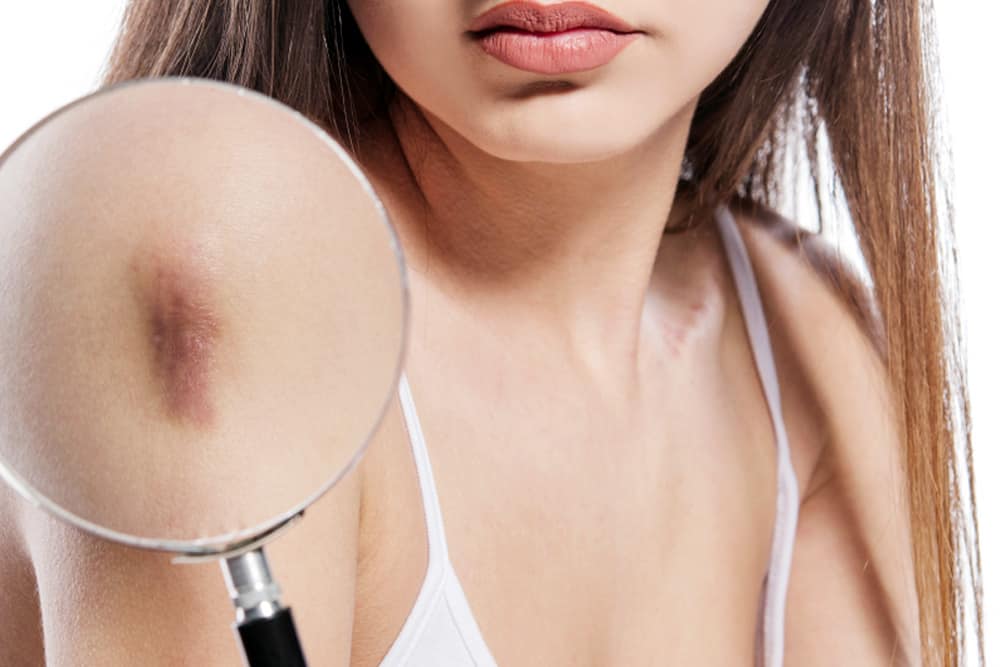
Keloid removal can be challenging. The success of keloid scar removal depends on various factors, including the composition of the keloid. In this article, we explore what keloids are, what the insides of keloids are filled with, how the inside of a keloid evolves as it matures, and how the composition of a keloid affects keloid removal treatments.
Keloids are an abnormal growth of scar tissue that forms at the site of an injury or surgery. They extend beyond the boundaries of the original injury and are a common skin condition. Keloids are more prevalent in people with darker skin tones and can occur anywhere on the body.
Keloids appear as raised bumps on the skin that can be pink, red, or brown in colour, varying in size from small to large and irregularly shaped masses. They are not contagious or cancerous, but they can cause pain, itching, and discomfort, leading to physical and mental anguish. In some cases, keloids can affect a person's self-esteem.
Keloids develop when the body produces an excess of collagen during the wound-healing process. Collagen is responsible for skin tissue's strength and structure. The body usually produces just the right amount of collagen to heal the wound. In the case of keloids, the body produces too much collagen, leading to the scar growing beyond the original injury's boundaries.
Keloids are filled with extracellular matrix (ECM) components, including collagen, glycosaminoglycans, and fibronectin. Collagen, synthesized by fibroblasts, is the major constituent of keloids. It is an essential protein that provides structural support and strength to the skin tissue. Keloids have an overabundance of collagen compared to normal skin. Moreover, the collagen fibres in keloids are arranged in a disorganized and haphazard manner and are thicker and more tightly packed than in normal skin, giving the keloid a raised and irregular appearance.
Upon histomorphologic analysis, keloids exhibited three distinct structural parts: keloidal collagen, organizing collagen, and proliferating core collagen. These components had varying proportions of collagen, fibroblasts, mast cells, and blood vessels.

The inside of a keloid has a distinct appearance that sets it apart from normal tissue, made up of dense fibrous tissue that contains collagen fibres arranged in an irregular pattern. The colour of the keloid's interior can range from red to pink to white, depending on factors like the keloid's age, location, and the individual's skin tone. The texture of the keloid's interior is firm and raised, with a smooth and shiny surface that can feel bumpy to the touch.

As time passes, the inside of a keloid changes in composition. Initially, the inside of a keloid consists of collagen fibres that are immature and arranged haphazardly. Over time, the collagen structure within the keloid matures from the inside out. The collagen fibres become more organized, aligned, and tightly packed. Thus, the keloid becomes thicker, and more raised with a denser, more fibrous feel.
As the keloid grows larger, the proportion of mature keloid collagen core increases. As it matures, the blood supply to the keloid core decreases, causing it to become harder and less responsive to treatments.
The specific composition of the keloid affects the effectiveness of keloid scar removal treatments. Keloids with a hard core may not respond well to injections or lasers but may be better treated with surgery. The hard keloid core, made up of highly compacted collagen fibres, is less vascular than the surrounding tissue. This makes it difficult for medications or lasers to penetrate and affect the underlying cells.
During surgery, the surgeon removes the hard keloid core and closes the wound with sutures, resulting in a smaller, flatter scar. However, keloid scar removal surgery is not always the best option as it can cause keloids to grow back larger than before. Even if your keloid may have a hard core, it may not be suitable for keloid scar removal surgery

Keloids that do not have a hard keloid core may respond better to other forms of treatment, such as injections, laser therapy, or even just creams, especially if they are tiny and flat. These treatments can help to reduce the size and appearance of the keloid without the need for surgery. However, these treatments may not be effective for all keloids, and they need to be repeated several times to achieve the desired result.
Understanding the composition of keloids can help clinicians tailor treatment approaches for individual patients. For instance, keloids with a hard core may have a better outcome with surgical excision, while non-surgical treatments may be less risky for those without a hard core.
If you are struggling with keloids, and seeking effective treatment but unsure of what treatment is best, we encourage you to contact 1Aesthetics Medical & Surgery. We can provide you with a range of keloid removal options, including surgical and non-surgical treatments, to help you achieve your desired outcome.
Address:
1Aesthetics, Medical & Surgery
#14-90 The Central Tower 1
8 Eu Tong Sen Street
Singapore 059818
Mon-Fri 10 AM to 730 PM
Sat 10 AM to 6 PM
Phone / WhatsApp:
+65 66125173 / +65 84899962
Email:
[email protected]